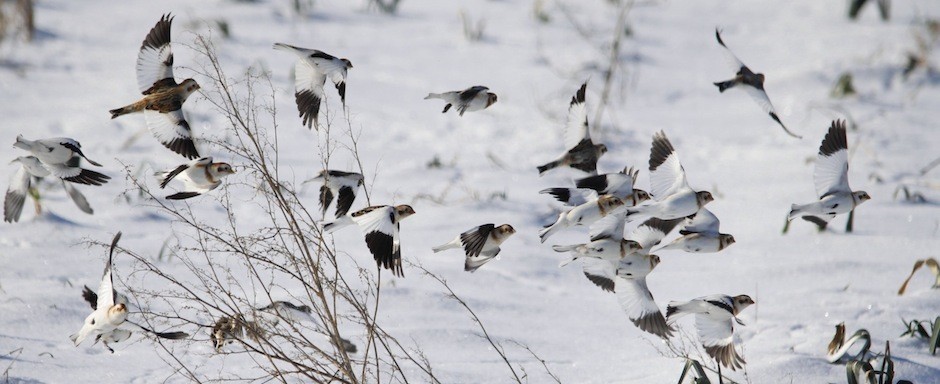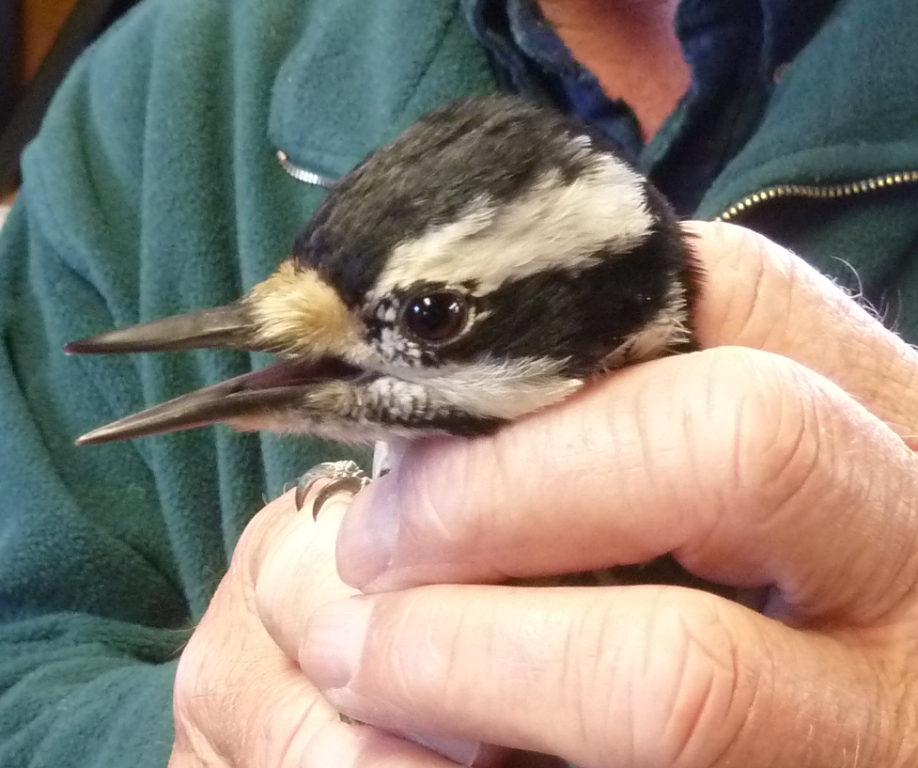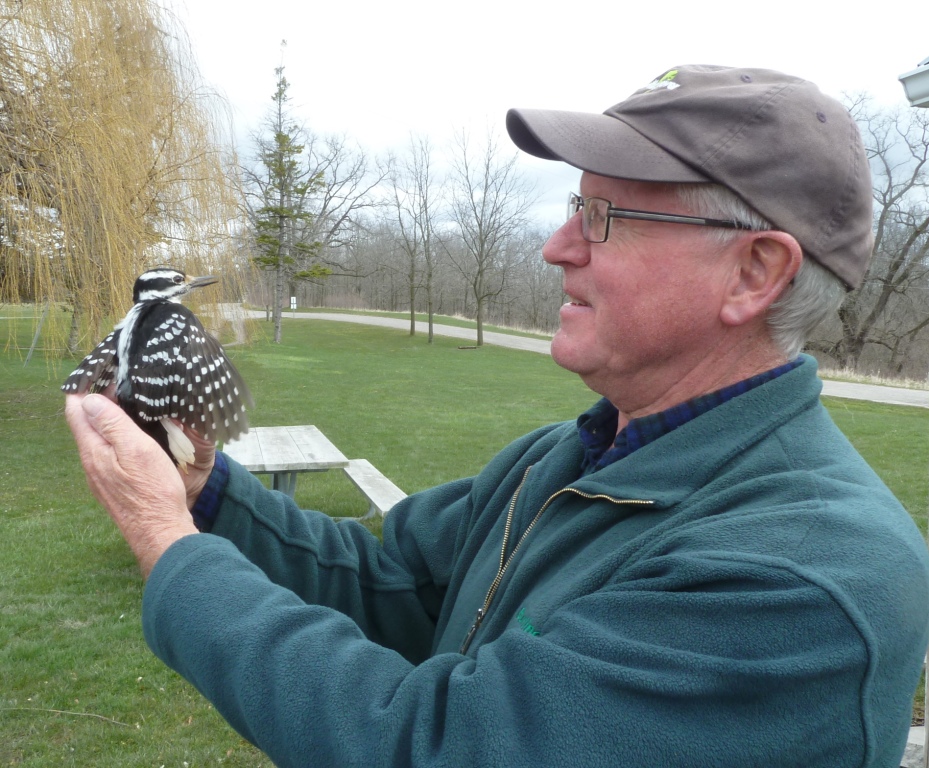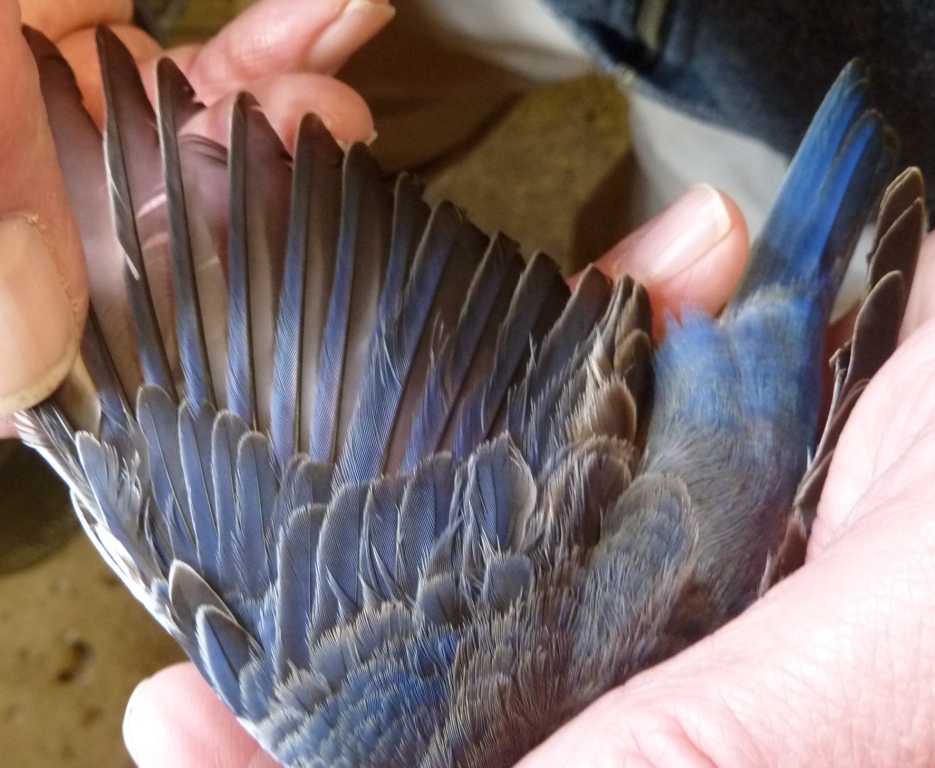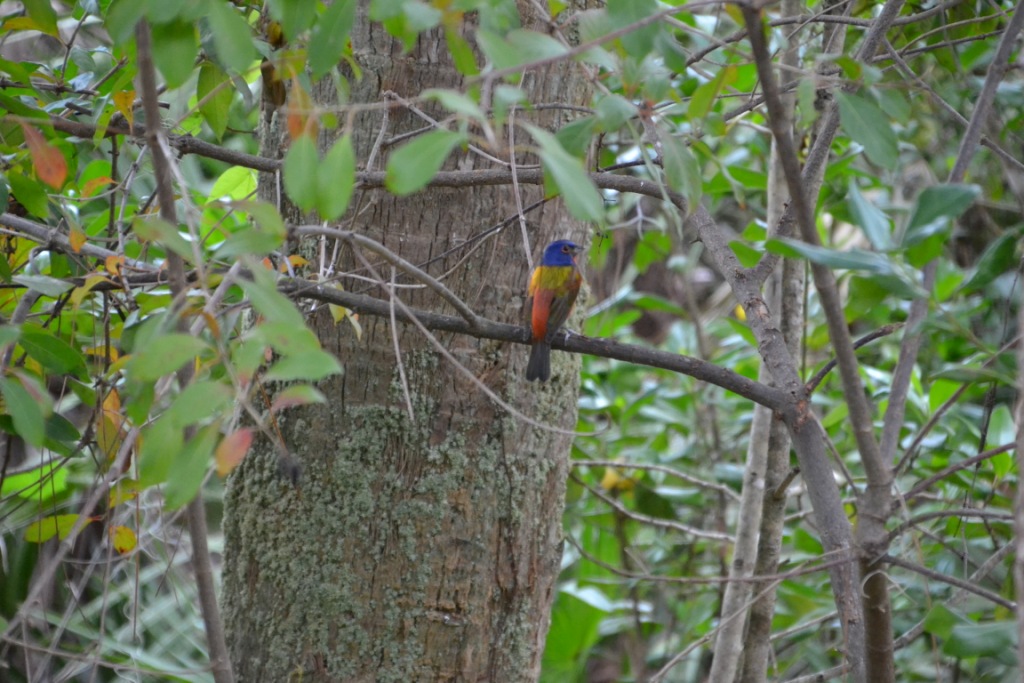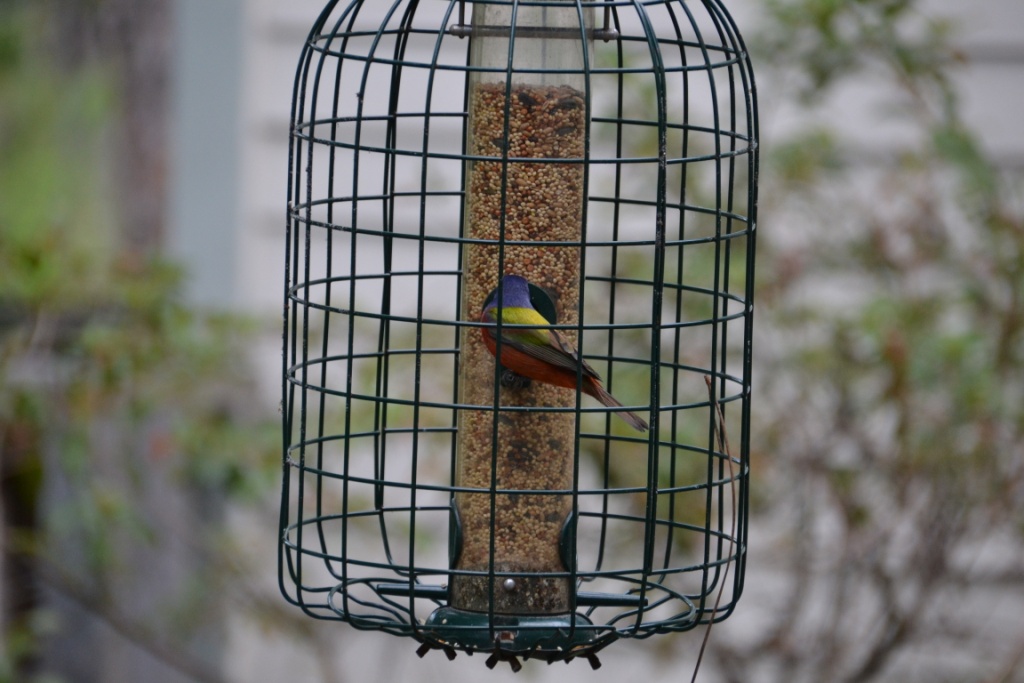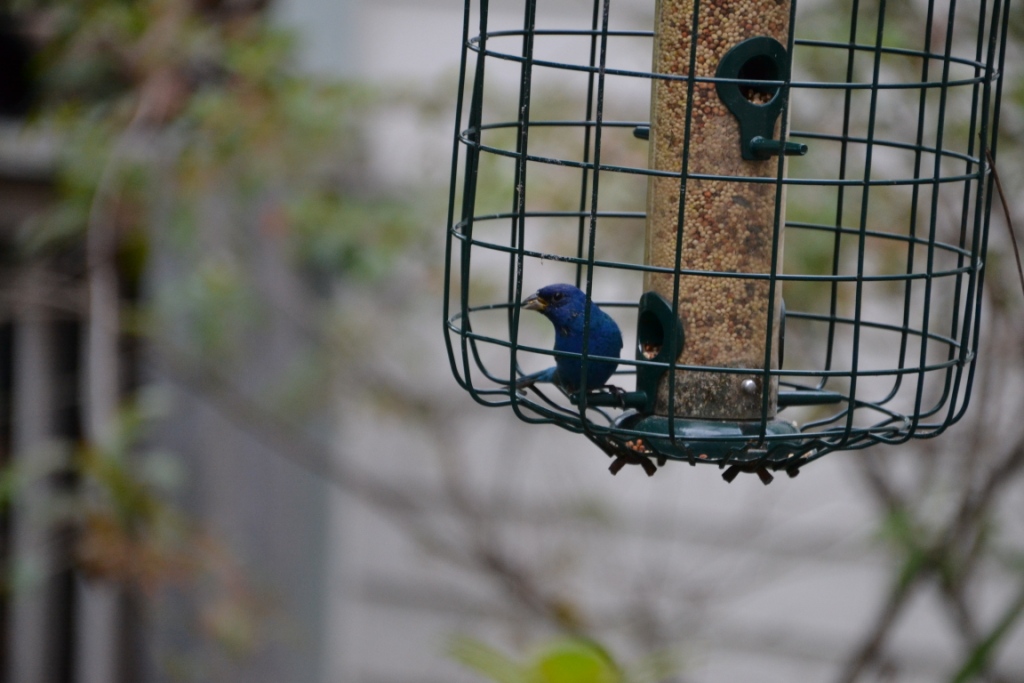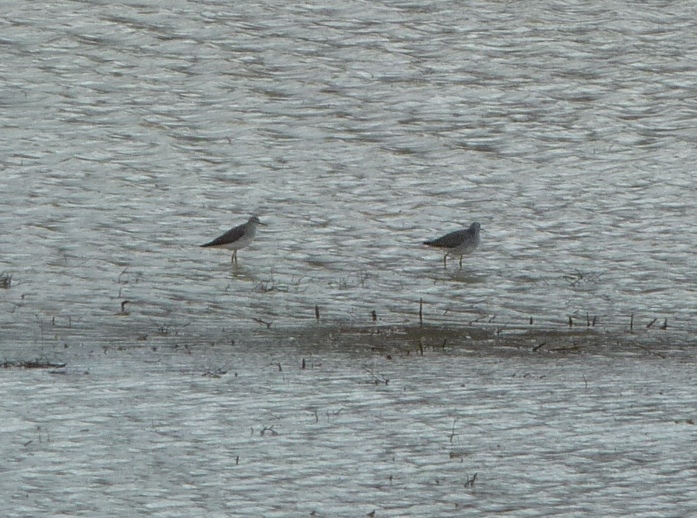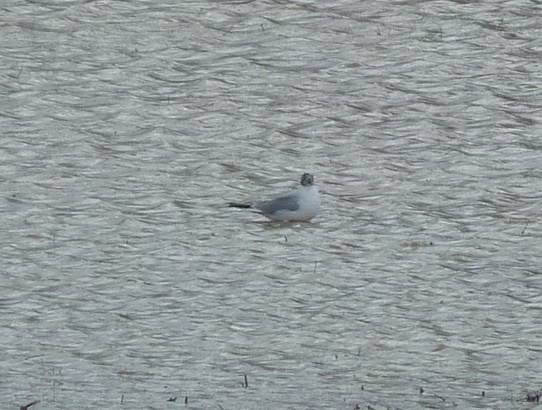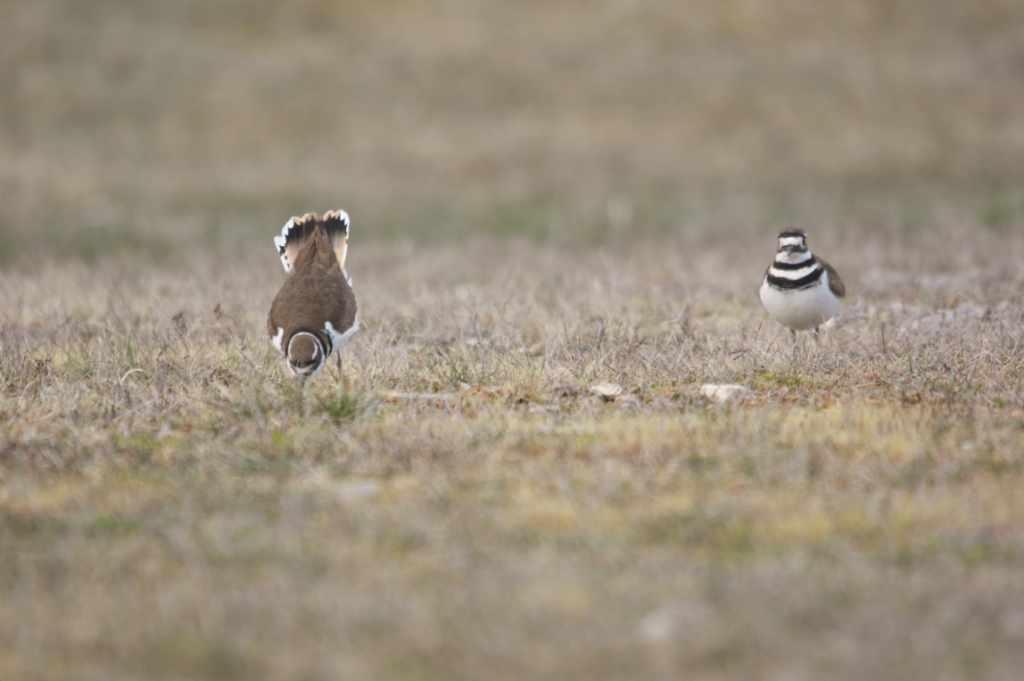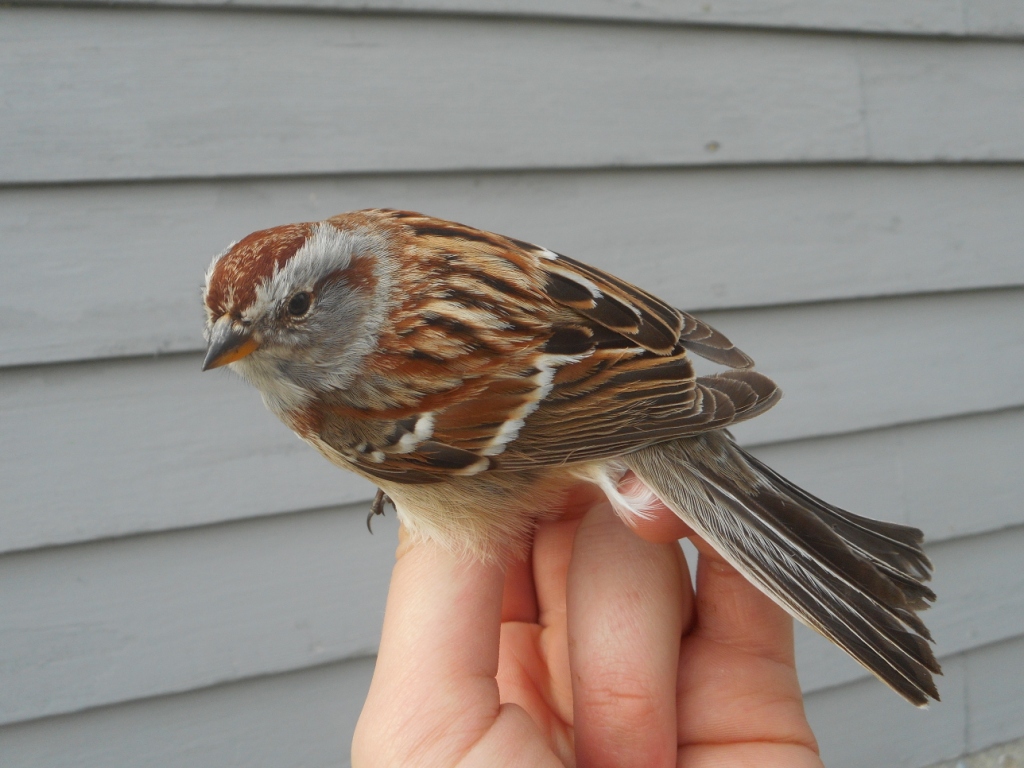
American Tree Sparrows have been hitting the feeders (and the seed in the traps) pretty hard for the past 10 days trying to fatten up for their flight up north. -C. Scholtens
We didn’t see anything new or out of the ordinary but the day had that “feel” to it: Winter is over…finally. There was lots of bird song early, before the un was up even (unlike the last week which has been so cold and windy). And birds were beginning to move during the day – blackbirds and even a few robins. It will be interesting to see how soon we run out of American Tree Sparrows and Dark-eyed Juncos as they leave Ruthven to make their way up north to nest. They’ve been marking time for a week now but they’ll soon be gone.
We finally got Carol’s net (#4C) into place and it responded by catching 4 woodpeckers and an Eastern Bluebird. The bluebird was an ironic treat for Bill Read, president of the Ontario Eastern Bluebird Society; he drove into the parking lot right at the moment I was extracting it from the net and got to band it.
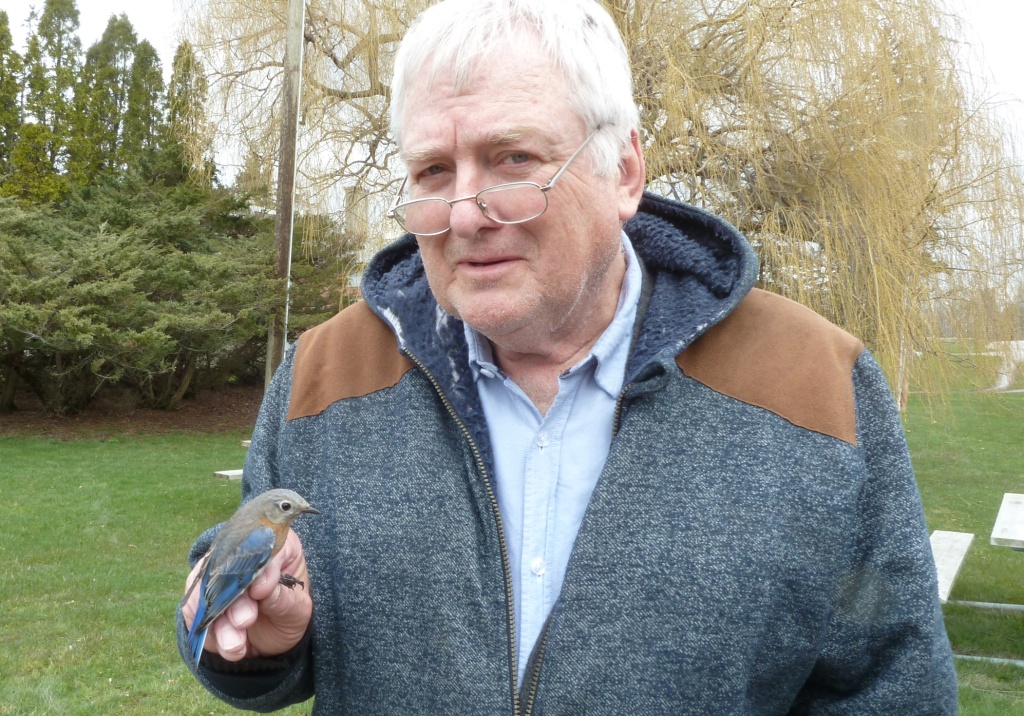
Bill Read with a female Eastern Bluebird….ironic, as he’s the president of the Ontario Eastern Bluebird Society.
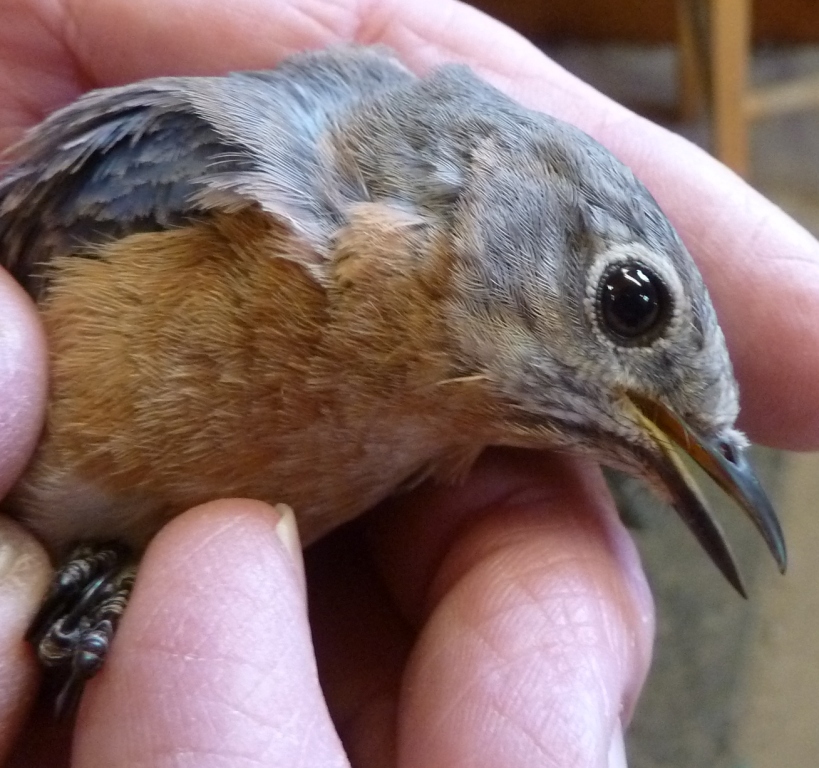
Bill states that the pronounced white eye ring of this female is an indication that it is a young or “Second Year” bird. In older birds it isn’t nearly so pronounced.
We handled 60 birds before the wind picked up and we closed the nets (late morning). Of these 37 were retraps, including 15 American Tree Sparrows.
We encountered 39 species of birds today – I am looking forward to passing 40, which for me is the sign that Spring is on the move.
Banded 23:
2 Mourning Doves
1 Hairy Woodpecker
1 Eastern Bluebird
1 American Tree Sparrow
1 Song Sparrow
5 Dark-eyed Juncos
1 Red-winged Blackbird
3 Brown-headed Cowbirds
8 American Goldfinches
ET’s: 29 spp.
Photo Gallery:
Fred and Betsy Smith were just recently in southern Florida and Fred sent me these beautiful photos of buntings. You can start looking for Indigo Buntings in 2 or 3 weeks. It’s too bad Painted Buntings don’t get this far north!
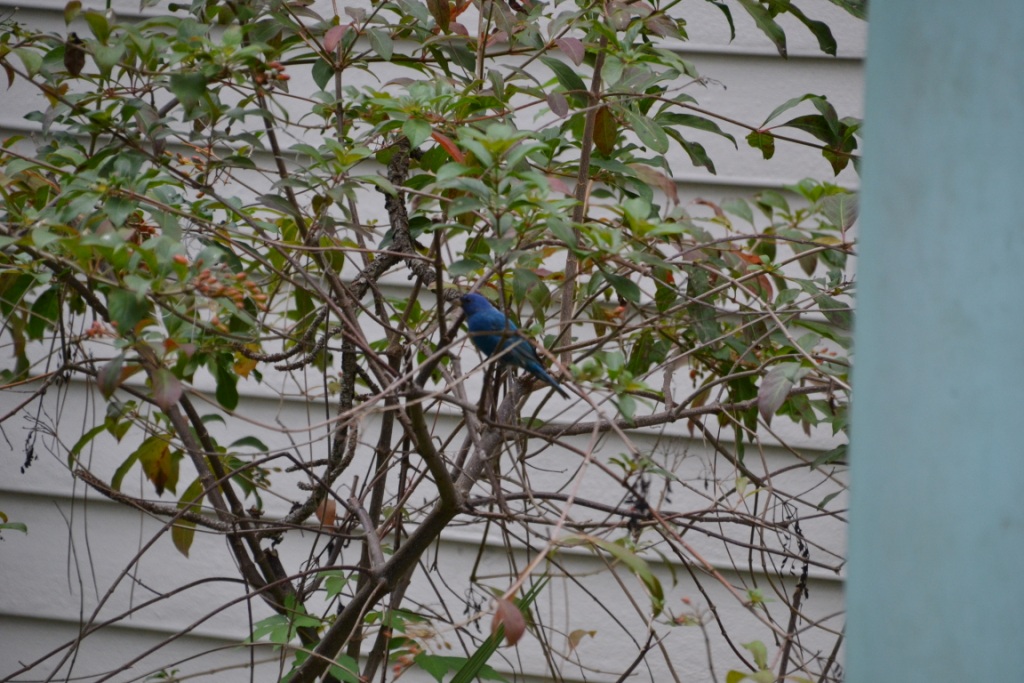
Indigo Bunting in southern Florida. You can start looking for them in about another 2 weeks. -F. Smith.
On the drive home today I came across these early migrants in a flooded field next to Hwy 54 between Ruthven and York.
On Saturday, Caleb Scholtens took some time to get these wonderful pictures of our resident Killdeer which had just returned following the melting of the snow cover.
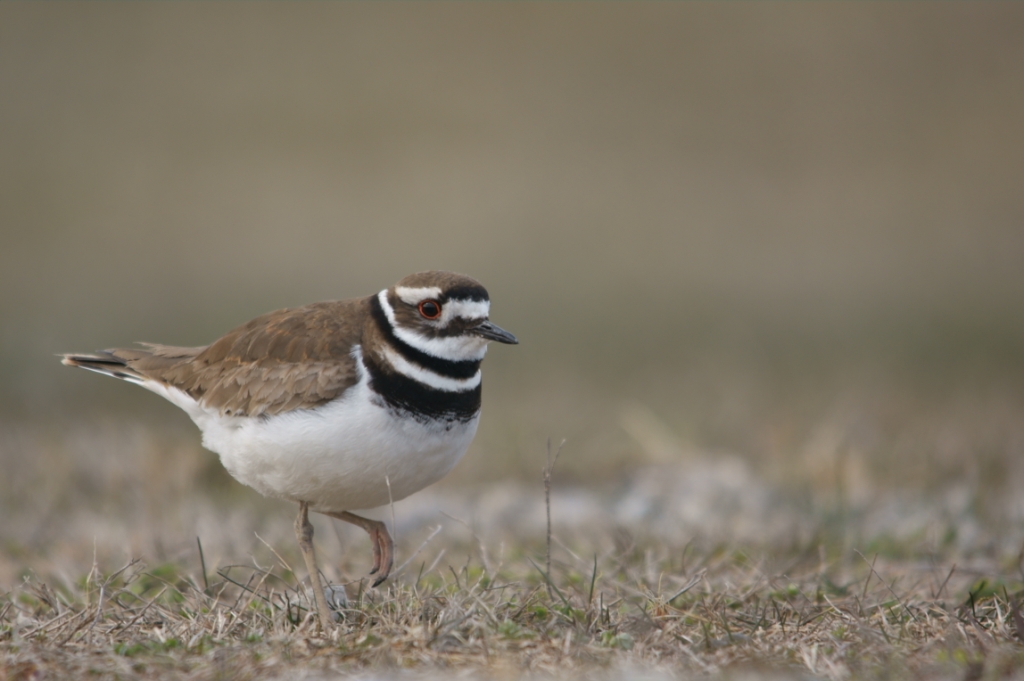
Despite the cold, as soon as the ground was clear of snow on Saturday the Killdeer returned to claim their nesting area. -C. Scholtens
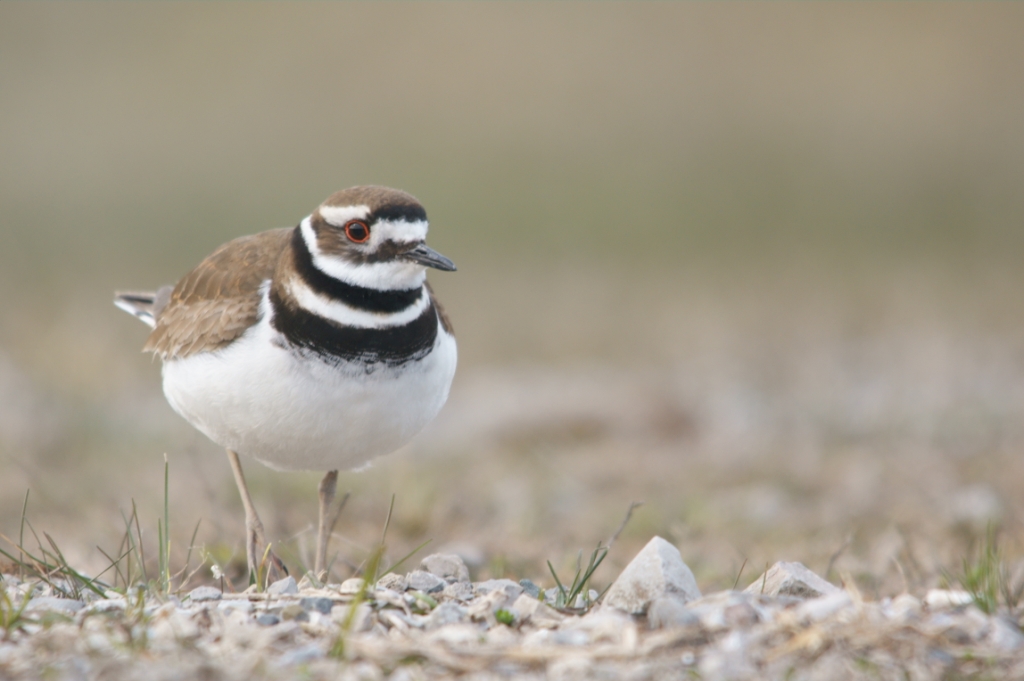
This Killdeer doesn’t look any worse for wear despite almost 10 days of near-Winter weather. -C. Scholtens
Rick
